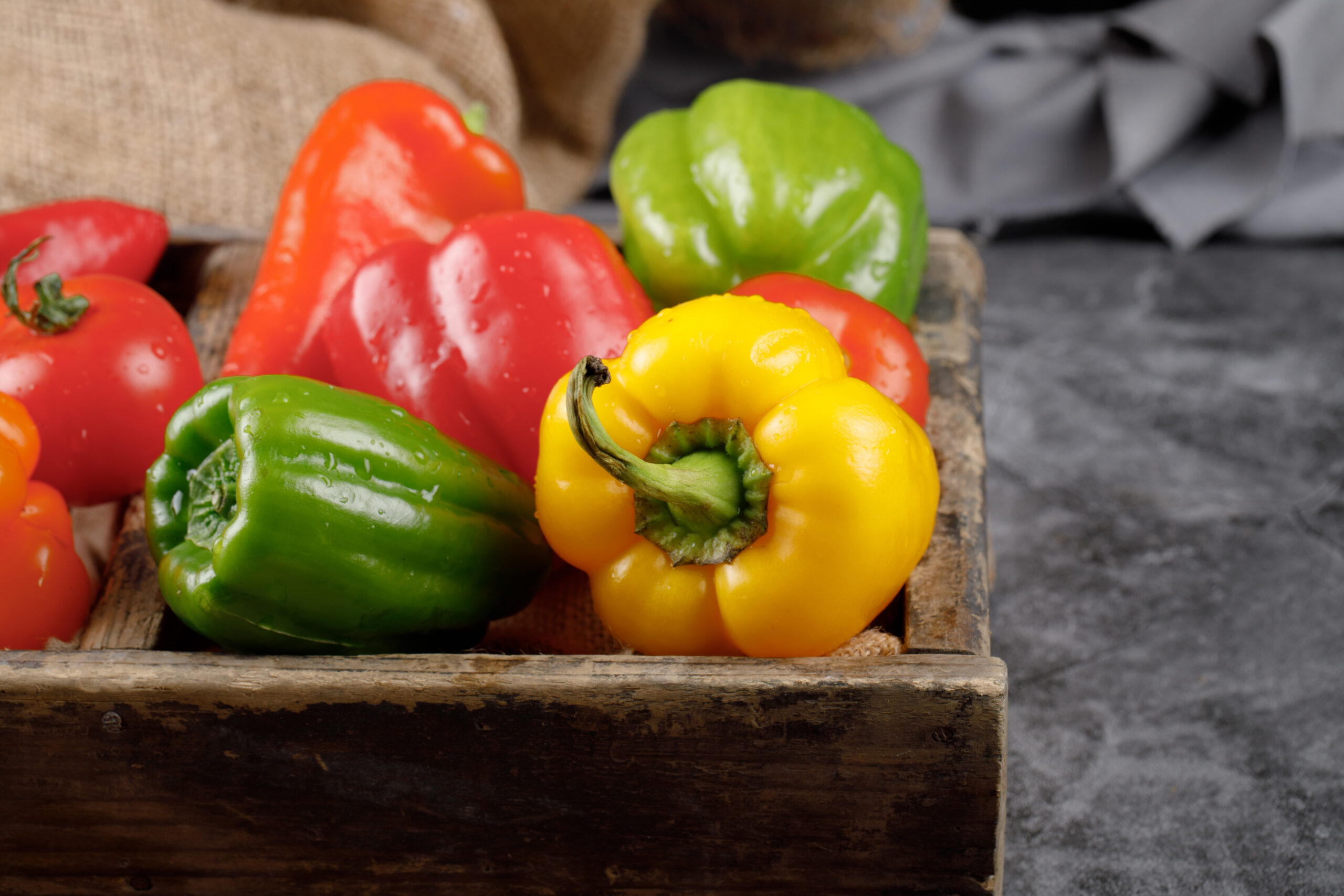
Bell peppers are a common plant for backyard gardens. Bell peppers don’t have capsaicin, so they aren’t hot like some pepper varieties. These peppers can be eaten raw, but they are usually used in other recipes.
Bell peppers are fairly easy to grow, but there are some tips for growing bell peppers that will give you a better yield.
With these tips, you’ll enjoy an abundant crop of sweet & crunchy bell peppers to feed your family this summer.
Bell Pepper Colors
When you go to the grocery store, you’ll see several different colors of peppers. Red peppers and green peppers are the most common ones available at the grocery store.
Red bell peppers and green bell peppers are actually the same plant. First, they will be green. If left on the plant, they will then turn red. Since red peppers are on the plant longer, they are higher in Vitamin C and tend to be sweeter than green peppers.
Choosing Where to Plant Bell Peppers
Bell peppers like a lot of sun, so choose an area in your garden where they can get sun all day. Make sure they won’t be shaded by trees or other tall plants like sunflowers or tomatoes.
Peppers like soil that drains well. They don’t like to sit in water, so make sure the area has good drainage. They prefer the middle ground of soil with some sand and some clay.
They like a soil pH between 6.0 and 7.0. If you don’t know what pH your soil is, pick up a testing kit and make adjustments as necessary.
When to Plant Peppers
Peppers like warmth, so you don’t want to start them from seeds in the garden. Plant to start them about 8 to 10 weeks before the expected last frost date or buy starts from a greenhouse.
Bell peppers also take about two to three months to mature, so planting them from young starts helps give them a head start versus planting from seeds.
Young bell peppers don’t like cool temperatures. Get them used to being outside by putting them outside during the day and bringing them in at night so they aren’t out in the cold air. After a few weeks of this, they should be ready to plant.
Planting Peppers
Once it’s at least 60 degrees Fahrenheit at night, you can plant your peppers in the garden. You can warm the soil by covering it with black plastic for a week before you plant.
When you plant, plant them no deeper than they were in the pots. Peppers don’t like to be planted deep. Space them about 18 to 24 inches apart.
Companion Planting
Plant your bell peppers near your tomatoes. The tomatoes help ward off beetles and soil microbes to protect the peppers.
Peppers can also be planted near cucumbers, carrots, eggplants, and onions. If you have a problem with beetles, plant geraniums or petunias near your bell peppers.
Basil grows well near bell peppers and keeps bugs away. Parsley attracts pollinators and certain types of wasps that keep the aphids away.
Avoid planting broccoli, cabbage, or mustard plants near your peppers. You’ll also want to avoid planting peppers near fennel or green beans.
Mulch
Peppers like to be kept warm and have well-drained soil, so mulch around the plants. A dark mulch absorbs more heat from the sun to keep the soil warm.
Bell peppers also like grass clipping. Grass mulch helps keep out weeds that can quickly overtake your garden and damage the root of the pepper plants.
Watering
Bell peppers need a lot of water, about 1 to 2 inches of water per week. Keep track of the rain with a rain gauge and supplement with water as needed.
If you live in a hot climate or on very hot days, you may need to water twice a day. If your peppers get too dry, they can turn bitter.
However, overwatering can damage the roots or cause the blossoms to rot.